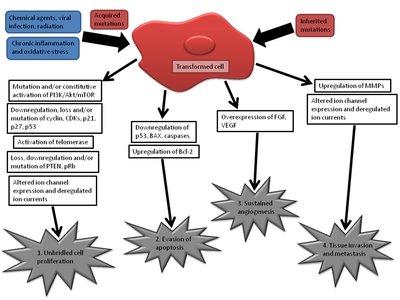-
Home
-
About JCTR
-
Gold Open Access
-
Issues
-
Editorial board
-
Author guidelines
-
Publication fees
-
Online first
-
Special issues
-
News
-
Publication ethics
-
Partners
-
Submit your manuscript
-
Submit your review report
-
Editorial Office
-

This work is licensed under a Creative Commons Attribution-NonCommercial 4.0 International License. ISSN print: 2382-6533 ISSN online: 2424-810X
Volume 3 Issue 2
Scorpion and spider venoms in cancer treatment: state of the art, challenges, and perspectives
Catarina Rapôso
Rapôso, J Clin Transl Res 2017; 3(2): 2
Published online: May 24, 2017
Abstract
Background and aims: Animal venoms comprise a mix of bioactive molecules with high affinity for multiple targets in cells and tissues. Scorpion and spider venoms and purified peptides exhibit significant effects on cancer cells, encompassing four potential mechanisms: 1) induction of cell cycle arrest, growth inhibition, and apoptosis; 2) inhibition of angiogenesis; 3) inhibition of invasion and metastasis; and 4) blocking of specific transmembrane channels. Tumor biology is complex and entails many intertwined processes, as reflected in the putative hallmarks of cancer. This complexity, however, gives rise to numerous (potential) pharmacological intervention sites. Molecules that target multiple proteins or pathways, such as components of animal venoms, may therefore be effective anti-cancer agents. The objective of this review was to address the anti-cancer properties and in vitro mechanisms of scorpion and spider venoms and toxins, and highlight current obstacles in translating the preclinical research to a clinical setting.
Relevance for patients: Cancer is a considerable global contributor to disease-related death. Despite some advances being made, therapy remains palliative rather than curative for the majority of cancer indications. Consequently, more effective therapies need to be devised for poorly responding cancer types to optimize clinical cancer management. Scorpion and spider venoms may occupy a role in the development of improved anti-cancer modalities.

DOI: http://dx.doi.org/10.18053/jctres.03.201702.002
Author affiliation
Department of Structural and Functional Biology, Institute of Biology, State University of Campinas (UNICAMP), Campinas, SP, Brazil
Tel: +55 19 983798091
Email: cataraposa@gmail.com
Handling editor:
Michal Heger
Department of Experimental Surgery, Academic Medical Center, University of Amsterdam, Amsterdam, the Netherlands

